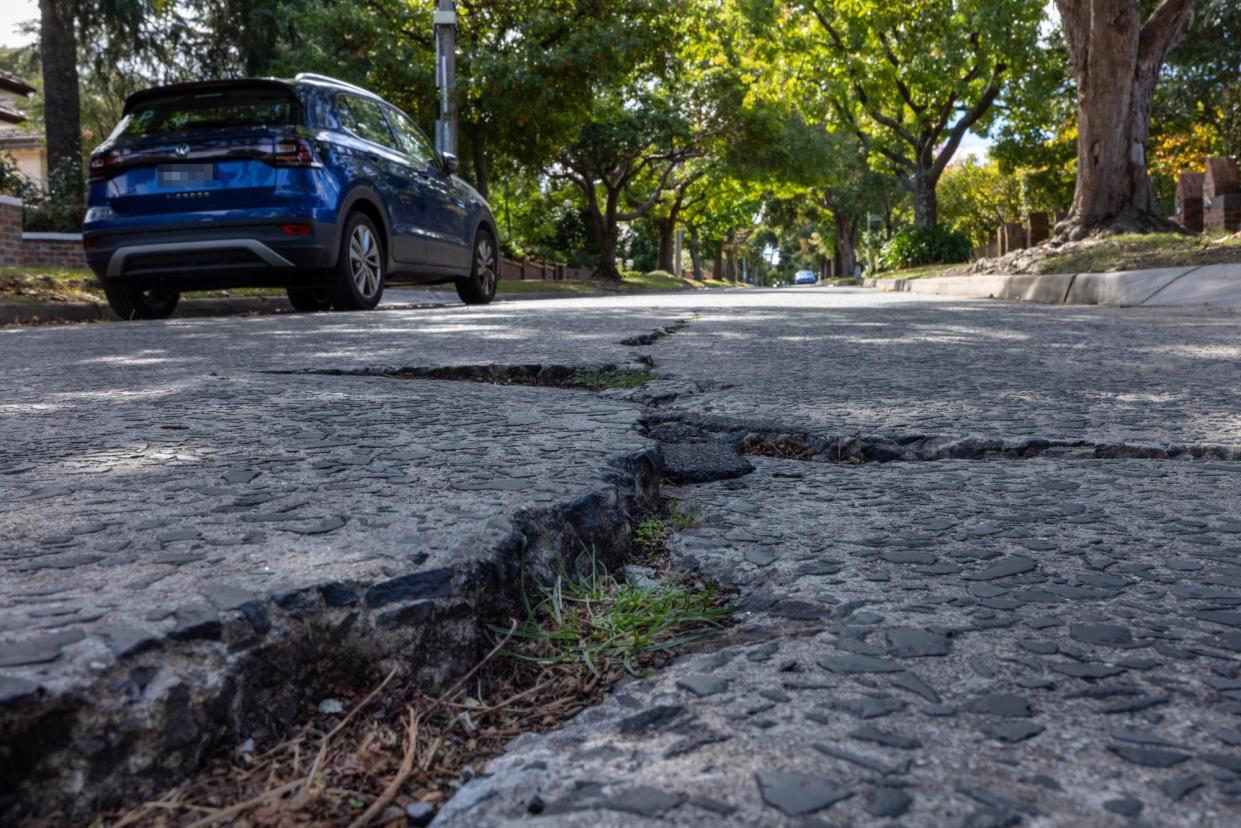‘Tone deaf’: Melbourne council criticised over plans to restore ‘heritage’ concrete roads

A Melbourne council has developed a plan to restore several concrete roads it deems to be of “heritage significance”, despite admitting it costs up to three times as much as asphalt and is less safe for drivers.
Community consultation closes this week on a plan by the City of Boroondara to restore about 15% of the council’s 22km of concrete roads, which were constructed during the early 20th century across suburbs such as Balwyn, Camberwell, Glen Iris, Hawthorn and Surrey Hills.
Daniel Freer, the council’s director of places and spaces, told Guardian Australia that 3km of road had been earmarked for restoration within its heritage precincts, including Boroondara’s oldest concrete road.
Related: EPA issues warning to councils after asbestos found in Melbourne parks
“Boroondara’s first concrete road, Compton Street, Canterbury, was constructed in 1925, and roads in the Hassett and Golf Links Estates suburbs were constructed circa 1927,” he said.
“These roads comprise just over 3km of council concrete roads and fall under Boroondara’s heritage precincts as providing a ‘predominantly intact interwar landscape containing concrete roads’.”
According to the draft plan, concrete roads were installed in several subdivisions during the period between the first and second world wars and “contribute to the municipality’s interwar heritage character”.
But it noted many of the roads were “extensively cracked”, “ageing” and “patching”.
Under the policy, the council would undertake “repair and restoration works” to small sections of the heritage-listed roads using concrete “rather than a full road reconstruction”. It would also aim to match the colour of the concrete to the original “as much as practical”.
If repairs are not possible, it would reconstruct the full road using concrete.
The remaining 19km of concrete roads in the area, which are not under heritage overlay, would be reconstructed with asphalt. The plan said this was the council’s “preferred surface”.
The council’s website said concrete roads were “up to three times the cost of replacing with asphalt” and were harder to maintain and repair, as well as less smooth for drivers.
“Concrete roads need to be textured to create enough grip. This can lead to the road surface being more uneven, bumpy and noisy when compared to asphalt roads,” it said.
The new policy also includes a plan to maintain the area’s bluestone kerbs, which it said were “considered by some to contribute to the heritage character of our neighbourhoods”.
Freer said community feedback would be considered by the council before the guidelines were introduced.
The historian Dr James Lesh of conservation consultancy Heritage Workshop said it was important the council maintain some of its concrete roads to preserve its history and uniqueness.
“This is something that contributes to the neighbourhood, like trees, gardens, statues and cast iron fences and other things that are heritage listed,” he said.
“There’s no reason why they can’t be incorporated into conservation protections and it means we don’t end up with every single neighbourhood and every single area of the city just looking exactly the same.”
Lesh said it was not uncommon for roads to be heritage listed, citing the Great Ocean Road, which was built as a memorial to Victoria’s first world war servicemen and women, and St Kilda Road, one of Melbourne’s grandest major thoroughfares.
But Jonathan O’Brien from Yimby Melbourne said it was another example of “overreach” by councils when it comes to heritage protections.
“No one actually thinks concrete roads are a valuable part of society, do they?” he said.
“We don’t live in 1950s America. We live in 2024 Australia in the midst of both a housing and climate crisis and at a time when councils are under a rate cap that means they don’t have any money to fund infrastructure and services.
“But they still insist on allocating their funds towards things like this. It feels tone deaf.”
O’Brien said 32% of developable land in Boroondara was heritage protected. His group has called on the state government to abolish heritage overlays in cases where negative social impacts are greater than the benefits.
“In the case of these roads … the council have made it clear these roads are less safe and more expensive. They know this, yet they’re still doing it.”


